 Nicolas Algoedt
Nicolas Algoedt
Jun 2, 2023
 Nicolas Algoedt
Nicolas Algoedt
Jun 2, 2023
If you attended my recent webinar on why customer loyalty is the key to recession-proofing your business, you’ll know it’s no exaggeration to say that customer retention is the #1 challenge for marketers.
In fact, the percentage of marketers seeing it as a problem is up a staggering 11% from last year.
And as just a 5% improvement in customer retention can boost a company’s revenue by anywhere from 25% to 95%, it’s not hard to imagine how much customer churn could cost your company.
Personalized experiences massively boost sales
How to use Smart Segmentation to deliver highly personalized marketing messages
How to leverage segmentation to overcome email marketing saturation with AMP
How to use WhatsApp for real-time customer engagement
2023 customer retention depends on building loyalty
Customer Loyalty FAQ
Let’s walk through the key strategies and takeaways from the webinar to help you improve your customer loyalty and build a compelling customer journey that keeps them returning to your brand.
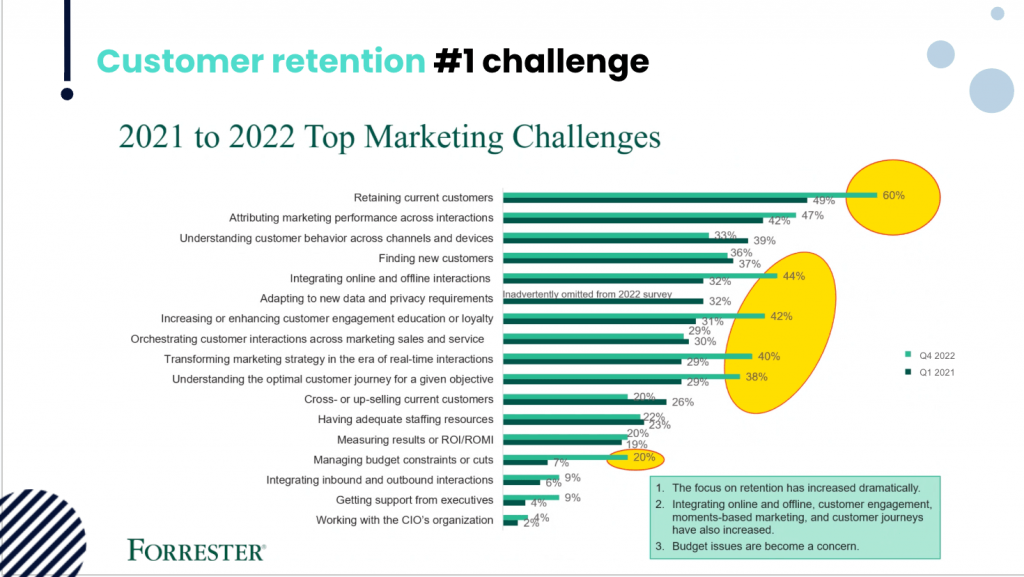
My first rule for increasing customer loyalty is simple; brands should always strive to make purchasing as easy as possible for buyers. And personalized user experiences are proving to be the most powerful tool yet in sales figures.
ECommerce brands looking to improve customer loyalty can benefit from the following personalization methods:
When your marketing is relevant to the consumer and can seamlessly offer the products they love, in their size—that’s when you’ll start to see a massive shift in revenue. Personalization and the fewest clicks to purchase are what count.
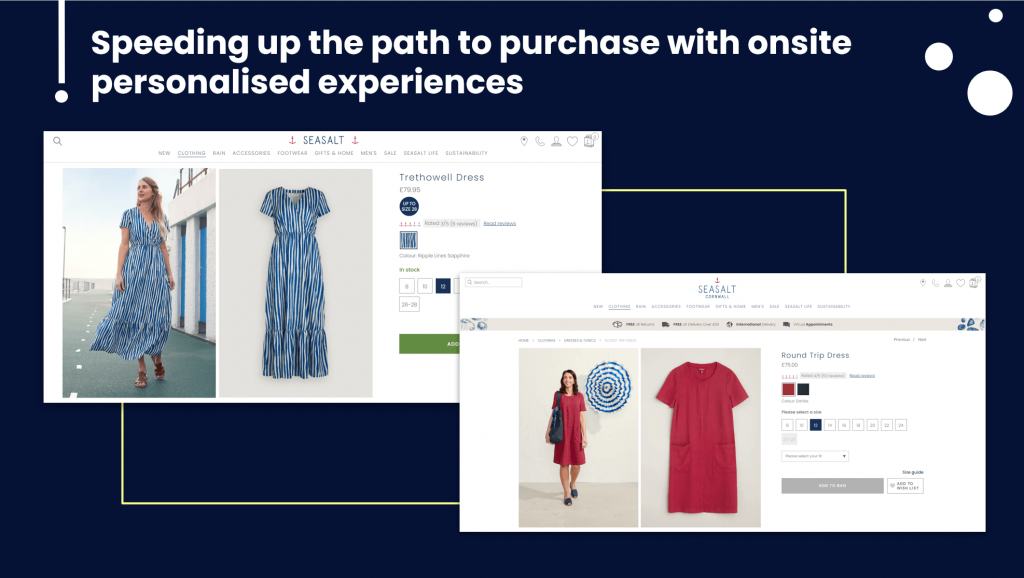
The first example I want to share is with our partner, Seasalt. Its team came to us with the challenge of reducing the time to purchase for its users.
Most of us are used to the experience of having to select our size when we land on a product we like; even within the same web visit. To address this, Seasalt worked with Insider to come up with a pre-size select campaign.
This means that for known and unknown users, those who consistently browse in the same size will have that size automatically selected when loading a new product page.
The adaption may have been simple, but Seasalt increased its revenue by five figures, simply by implementing this one solution.
Being familiar with prospective and current customers isn’t just for the sales team. Knowing who your users are and delivering messages based on their previous interactions with you will drive sales and enable you to deliver highly targeted campaigns–both of which are the key to preventing costly customer churn.
We know that third-party cookies are becoming less and less available to marketers (and I’m not talking about the crumbly, chocolatey kind). So if you’re struggling to come up with methods to understand your customer and their behaviors better, here’s what I suggest.
It’s easy to figure out who your new shoppers are vs. returning customers, but how do you find out as much as possible about the newbies before they leave your site?
Simple: Just ask.
Customers who are interested in your brand would far rather answer a couple of questions that lead to personalized recommendations than be inundated with irrelevant offers.
When third-party data isn’t available, using gamification templates to learn more about your customers engages them with your brand and creates a fun, low-effort shopping experience that new customers can enjoy.
One of our Insider partners is a leading male skincare brand that recognized the value in tailoring products to customer skin types.
We built a form for visitors to answer questions, that would lead them to the most relevant products. The quiz included questions about their home climate and whether their skin is prone to acne or blemishes.
For customers, the more relevant the experience, the more effortless the shopping experience is for them.
So, beyond asking customers quizzes– how else can we ensure they have a personalized experience?
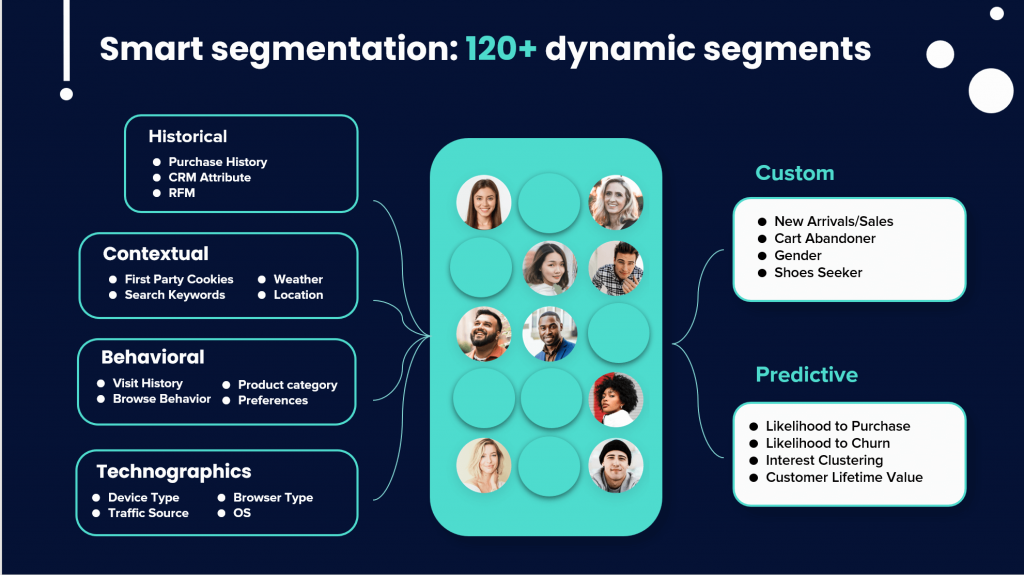
To segment your audience and personalize their experience, you need to gather data on their behavior. At Insider, we have over 120+ dynamic segments that you can tap into to better understand your customers throughout their lifecycle. From historical information like purchase history and CRM attributes, to predictive segments such as the customer’s likelihood of purchasing or churning.
Hyper-personalization is how you can optimize your conversations with each of your customers. To really leverage those segments you also need information on context and behaviors.
Each of your customers is an individual, and as such, you need to talk to them based on their individual needs and wants.
Loyalty amongst shoppers is a spectrum, and understanding where a given customer falls and how they want to be spoken to should determine your messaging and the experience you deliver.
How you speak to ‘Sophie’, who loves your brand, interacts with all of your channels, and purchases regularly, need to be vastly different from how you talk to ‘Rachel’, who often shops around for the best deal, rarely purchases, and engages most with your promotional offers.
How do you continue to surprise and delight Sophie, while also boosting Rachel’s CLV?
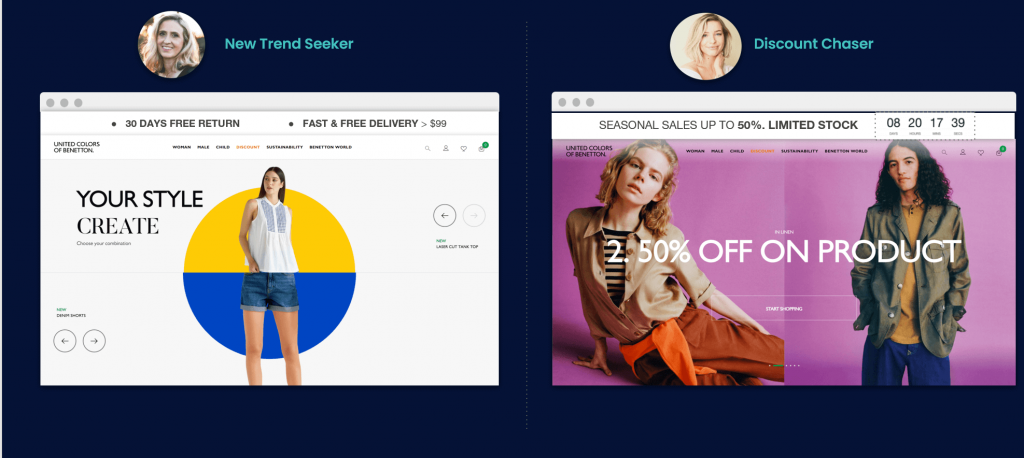
While custom landing pages are a great option (especially for traffic coming from expensive paid ad channels), I’m sure you’re all painfully aware of just how much the dev work involved can slow marketers down.
A great alternative was used by United Colors of Benetton. The image above shows their homepage, personalized with two different experiences to suit these two buying personas.
By only highlighting discounts to those with a high discount affinity, you protect your bottom line. Sophie, your new trend seeker is directed straight to your latest, full-price styles, keeping AOV and CLTV high.
You don’t always need to provide discounts to make a sale. Segment your most loyal customers and reward them with special offers such as early access to exclusive content and new product launches.
Letting your biggest fans get in the door first creates a level of emotional loyalty that a discount can’t buy.
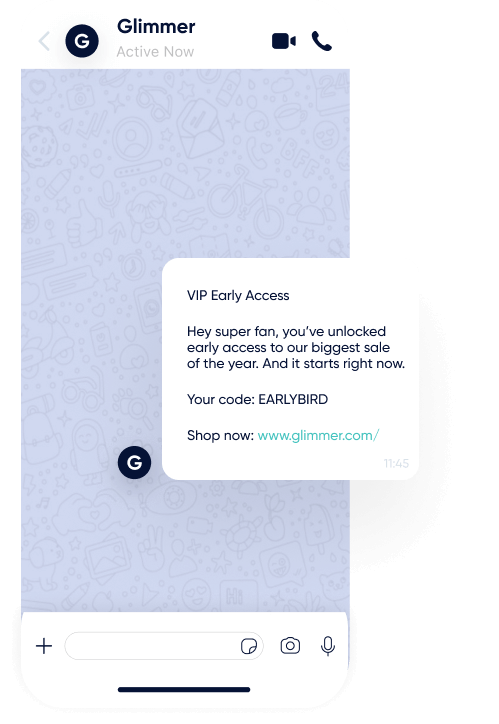
There are a couple of ways we can detect and prevent churn to make sure you don’t need to replace customers. Let’s look at two examples of how to do this.
The first is based on the cohort that gives marketers the biggest headache, and that’s churning. Recency, frequency, and monetary (RFM) metrics value dramatically from business to business, so it’s vital that you set your practice according to your customers and not just any old benchmark.
Looking at the images below, there are two options.
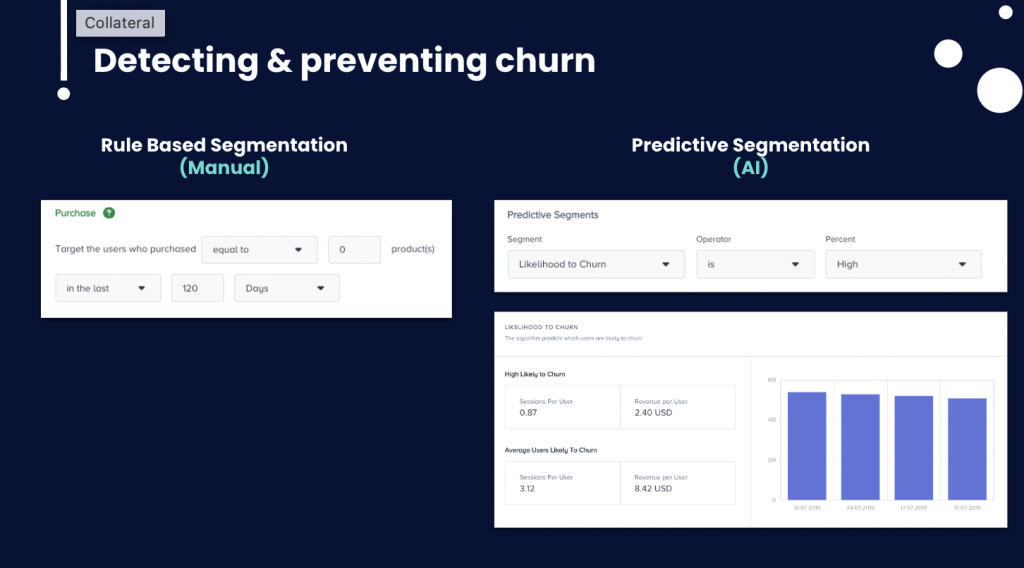
The option on the left is an example of a very simple measure that can be set up manually. You trigger your win-back campaign if/when a customer has not made a purchase in the last 120 days.
The example on the right is a little bit more advanced. Over here, we’re using AI to detect and segment users who are predicted to churn.
This works by an AI engine constantly monitoring and assessing your customer’s behaviors and creating predictive segments accordingly. With this, you can remove a lot of the guesswork, act sooner and prevent potentially saveable customers from slipping through the net.
We’ve walked through how to identify your users through segmentation, and some of the journeys you can set up to encompass a number of your channels. Now, I want to focus on one channel iin particular–Email.
It’s no secret that marketers everywhere have seen a decline in email performance over the last few years, but it remains one of the most accessible channels available.
And to help cut through the noise, Insider has recently releasd AMP for Email. We’re actually one of the only platforms within our industry to offer such a feature. So, what is it and how can it be used to drive loyalty?
AMP stands for ‘accelerated mobile pages’ – you’ll likely have used it through your websites to provide speedy mobile web browsing. But did you know that AMP has evolved to provide interactive, web-like design blocks within emails too?
Customers today can take in-email action – for example, making a purchase or filling out a form– without being redirected to your site.
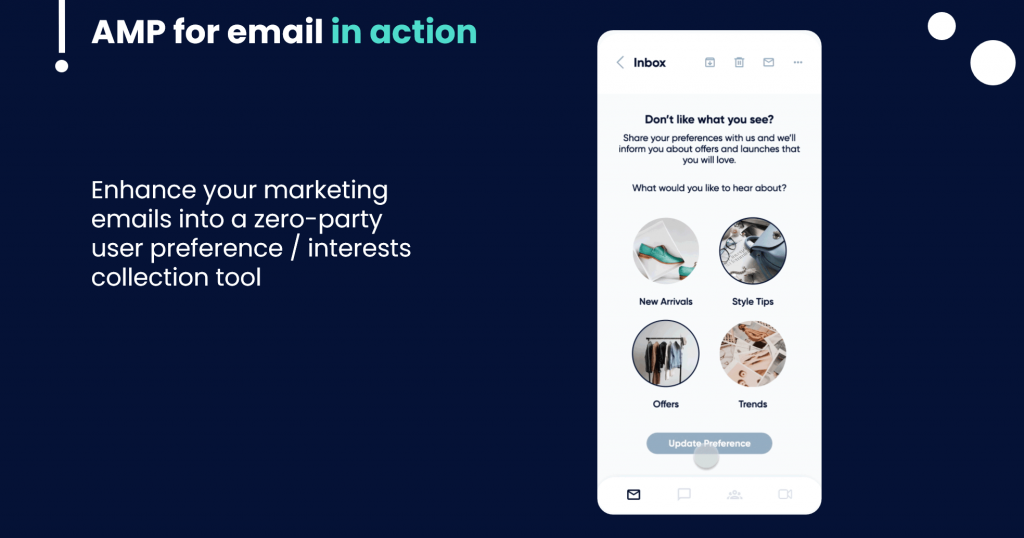
People are becoming more sensitive to how their data is used. Global brands such as Apple are moving away from third-party cookies towards a ‘cookieless’ world and offering that option to their users. Prioritizing zero-party data helps users feel their information is secure without compromising your ability to respond to their wants and actions.
People love an interactive website; with the use of AMP, your emails can emulate the same carousels, vote meters, surveys, and more, as found on your site.
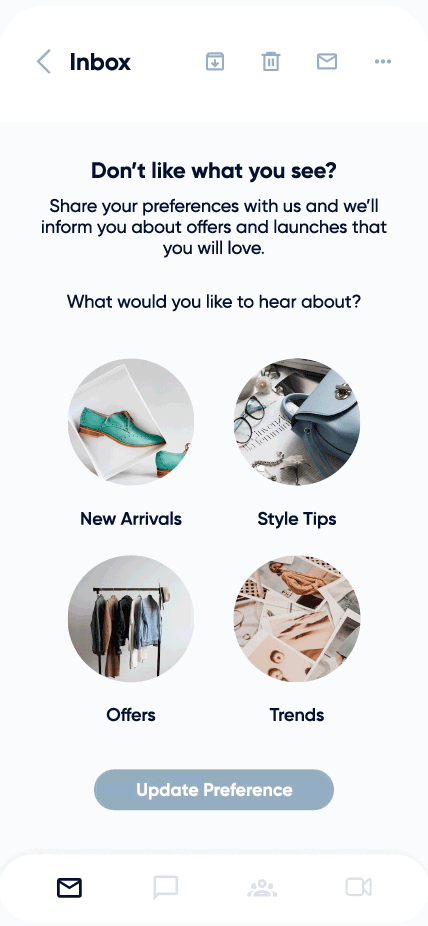
Ease of purchase is everything today, and AMP for email provides just that. AMP reduces the number of clicks and redirects for users, reducing barriers to purchase and allowing for a seamless experience when purchasing from an email.
Cutting through the noise of an email inbox is already hard. Incorporating AMP with your emails ensures that when your customers actually open your emails, they’re much more likely to consider what you’re offering.
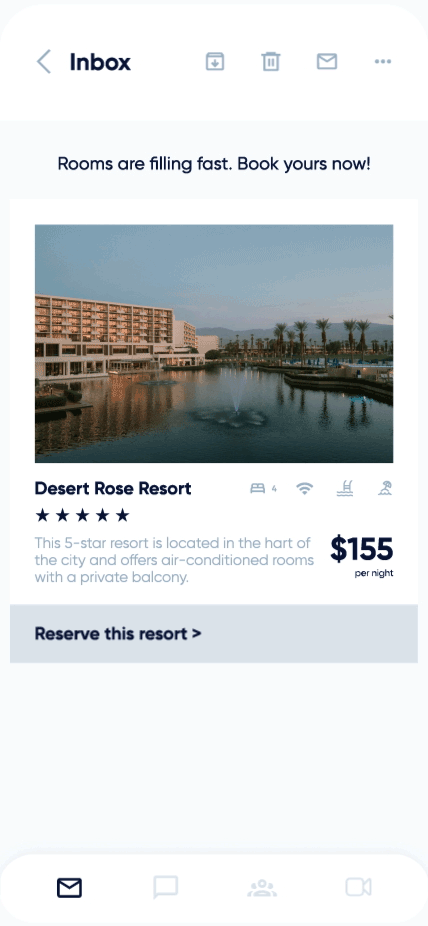
As a brand, you need to differentiate yourself–especially when deepening your relationship with customers. So, let’s talk a channel that’s relatively new to the channel marketing mix– WhatsApp.
WhatsApp has come a long way in the marketing world– in the last year, it’s enabled businesses to send promotional messages to users.
The unique aspect of WhatsApp for business is the ability to have a two-way conversation with your customers, a conversation that very few advertising platforms have previously allowed for. Additionally, WhatsApp being relatively new (especially when compared to platforms such as email) means there’s significantly less noise to compete with on their platform.
In fact, WhatsApp has opt-in rates, view rates, and conversion rates 4x higher than email. And while this doesn’t mean you should abandon email, you should consider whether WhatsApp is another good platform for your brand.
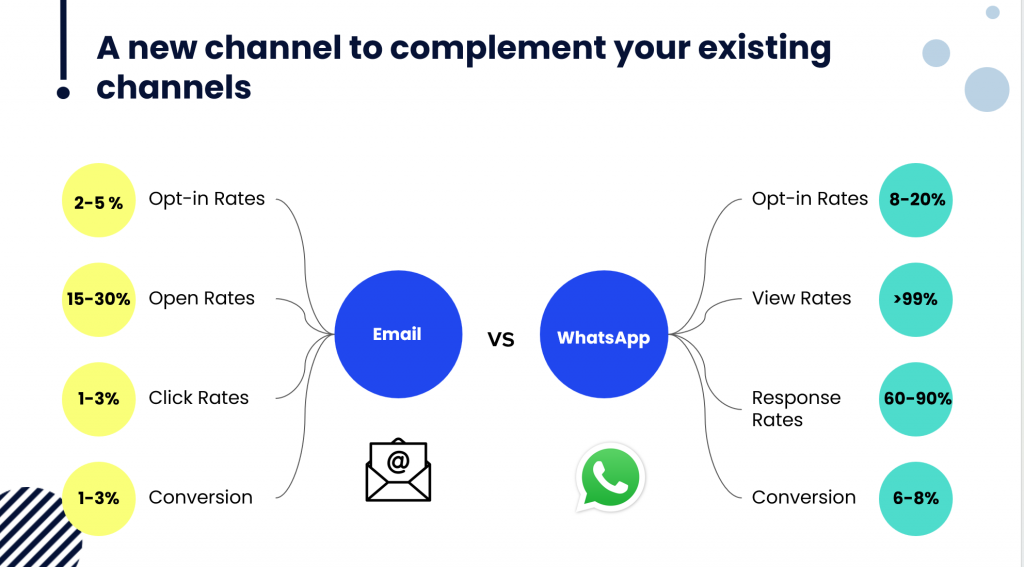
Based on Insider’s data, there are a number of uses for WhatsApp that we constantly recommend for brands:
Offering very short-term discounts to encourage a sale is a great way to connect with a brand new subscriber and get their custom.
Brand loyalists will be grateful to know when their favorite items have had a price drop. Letting them know first shows you care about the things they like, and your customers will love you for it.
You can (and should) send messages personalized by name with products that you know your customers will love based on their behaviors and data.
Insider recently launched WhatsApp Commerce; the powerful ability for businesses to build a seamless buying experience from within WhatsApp. From two-way messaging to product launches to post-purchase confirmations, businesses can reach customers in the app where they spend the most time.
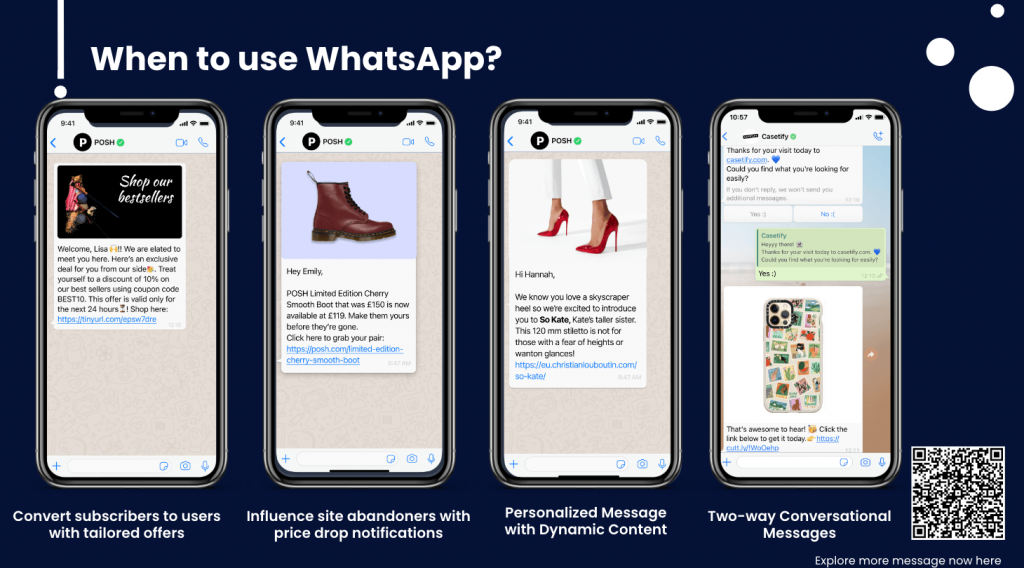
There’s no hiding it, times are tough–for brands and customers. Which is why it’s crucial to ensure that your existing loyal customer is valued and catered for while also taking the steps to convert more infrequent customers and turn them into loyal ones.
Segmentation and personalized, targeted marketing campaigns is the key to this. You need to understand historical, contextual and behavioral data and then leverage that at the right time, across the right channels.
Yes, it does sound like a lot of work– but it doesn’t need to be. You can avoid using discounts or offers that impact profit margins to reach your customers with relevant, timely messages on the channels they use most by adding Insider to your marketing tool stack.
If you want to book a demo, explore the platform further, or reach out to me– I’ll be happy to answer any questions you may have.
Customer loyalty is the tendency of customers to consistently choose and support a particular brand or company over its competitors.
Customer loyalty is easiest built by proactively making your customers feel valued and acknowledged. From personalized marketing to exceptional customer service, the experience you offer your customers is what helps build long-lasting relationships.
Consistently delivering an exceptional customer experience across every interaction is the most direct cause of customer loyalty.
Customer loyalty is important because it leads to repeat business, positive word-of-mouth, cost savings, competitive advantage, and brand advocacy.
Increase customer loyalty through personalized marketing by collecting customer data, segmenting based on similarities, tailoring communication, and providing customized experiences.

Written by
Nicolas Algoedt
Passionate about new technologies and e-commerce, Nicolas has held various position at leading e-commerce and tech companies including Groupon, Microsoft and Bwin.